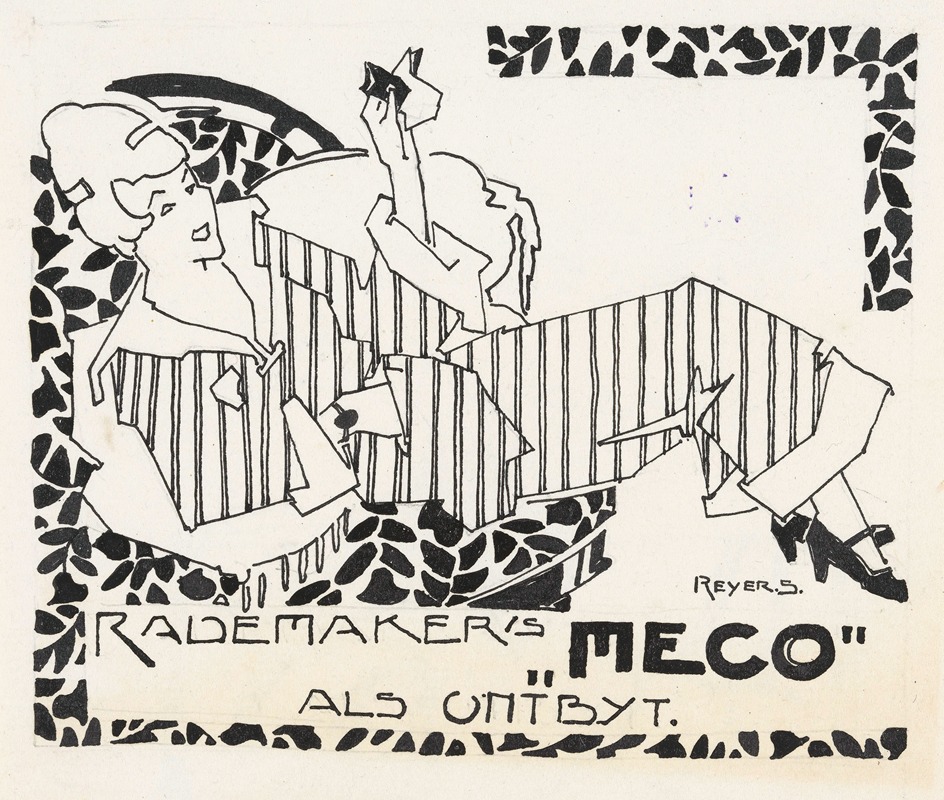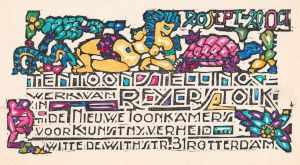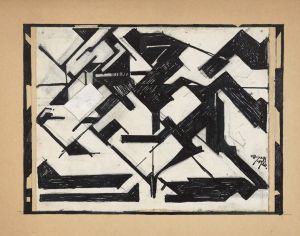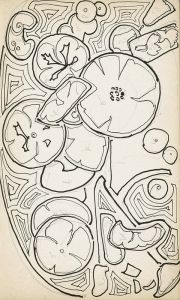
Ontwerp voor reclame voor `Rademaker’s Meco’
A hand-painted replica of Reijer Stolk’s masterpiece Ontwerp voor reclame voor `Rademaker’s Meco’, meticulously crafted by professional artists to capture the true essence of the original. Each piece is created with museum-quality canvas and rare mineral pigments, carefully painted by experienced artists with delicate brushstrokes and rich, layered colors to perfectly recreate the texture of the original artwork. Unlike machine-printed reproductions, this hand-painted version brings the painting to life, infused with the artist’s emotions and skill in every stroke. Whether for personal collection or home decoration, it instantly elevates the artistic atmosphere of any space.
Reijer Stolk was a Dutch artist known for his contributions to graphic design and printmaking in the early 20th century. One of his notable works is the "Ontwerp voor reclame voor 'Rademaker’s Meco'," which translates to "Design for Advertising for 'Rademaker’s Meco'." This piece is a fine example of Stolk's skill in combining artistic creativity with commercial design, a common practice among artists of his time who were exploring the boundaries between art and advertising.
Stolk was born in 1896 in the Netherlands and became an influential figure in the Dutch art scene. His work often reflected the dynamic changes in art and society during the early 1900s, a period marked by rapid industrialization and the rise of modernism. Stolk's designs were characterized by their clean lines, bold typography, and innovative use of color, elements that were becoming increasingly popular in advertising during this era.
The "Ontwerp voor reclame voor 'Rademaker’s Meco'" is a testament to Stolk's ability to integrate these modernist elements into his work. Although specific details about the content and visual style of this particular piece are scarce, it is likely that the design incorporated elements typical of Stolk's style, such as geometric shapes and a focus on clarity and impact. These features were essential in creating effective advertisements that could capture the attention of a rapidly growing consumer base.
During the early 20th century, advertising was undergoing significant transformation. The rise of mass production and consumer culture necessitated new approaches to marketing, and artists like Stolk played a crucial role in this evolution. By applying artistic techniques to commercial projects, they helped to elevate advertising from mere informational content to a form of visual art that could engage and persuade audiences.
Stolk's contribution to advertising design is part of a broader movement in which artists sought to bridge the gap between fine art and commercial art. This movement was particularly strong in Europe, where artists were experimenting with new forms and techniques that could be applied to various media, including posters, packaging, and other promotional materials.
While specific information about the impact or reception of the "Ontwerp voor reclame voor 'Rademaker’s Meco'" is not readily available, it can be inferred that Stolk's work in advertising was well-regarded, given his prominence in the field. His designs likely contributed to the visual identity of the brands he worked with, helping them to stand out in a competitive market.
Reijer Stolk's legacy in the realm of graphic design and advertising is significant. His work exemplifies the innovative spirit of early 20th-century artists who embraced new technologies and media to expand the possibilities of art and design. Through pieces like the "Ontwerp voor reclame voor 'Rademaker’s Meco'," Stolk not only advanced the field of advertising but also left a lasting impact on the visual culture of his time.











